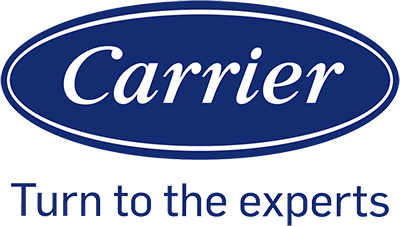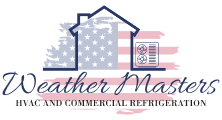When we think about our health, we often focus on diet, exercise, and sleep. What we don’t always consider is the air moving through our homes each day. Clean air ducts support better wellbeing by reducing the amount of dust, allergens, and other particles we breathe in.
Air ducts can collect dirt, mold, and even bacteria over time. When this buildup circulates through our living spaces, it can affect how we feel and how well we breathe. By paying attention to cleanliness, we give ourselves a healthier environment to live in.
We will look at how air duct cleanliness connects to overall wellbeing, what kinds of contaminants are most common, and the benefits of keeping ducts maintained. We will also share practical steps for keeping air ducts in good condition so we can improve comfort and health at home.
The Link Between Air Duct Cleanliness and Overall Wellbeing
Clean air ducts help limit the buildup of dust, allergens, and airborne contaminants that circulate through our homes. When ducts stay clean, we reduce risks tied to poor indoor air quality and lower our chances of breathing problems linked to dirty systems.
Impact on Indoor Air Quality
Air ducts move heated and cooled air throughout our living spaces. If they contain dust, mold, or debris, those particles spread into the air we breathe. This reduces indoor air quality and can make rooms feel stuffy or musty.
Poor indoor air quality often leads to discomfort, such as dry eyes, headaches, or throat irritation. In some cases, it can make existing conditions like asthma worse. We may notice more frequent coughing, sneezing, or difficulty breathing when ducts remain unclean.
Routine cleaning and proper filter replacement help maintain cleaner airflow. Using HEPA filters and checking ducts for visible buildup are simple steps that support a healthier environment.
Health Risks of Dirty Air Ducts
Dirty air ducts can expose us to harmful particles that affect our respiratory system. Dust, mold spores, and bacteria can circulate through vents and settle in the lungs. This increases the chance of respiratory infections and long-term irritation.
Those with asthma face higher risks. Inhaling airborne contaminants from ducts can trigger asthma attacks or make breathing more difficult. Even people without chronic conditions may experience fatigue or sinus problems when exposed to polluted airflow.
A simple maintenance schedule reduces these risks. Cleaning ducts every few years and changing filters regularly lowers exposure to harmful buildup. This keeps our indoor air safer for both children and adults.
Air Ducts as a Source of Allergens and Contaminants
Air ducts often collect allergens like pollen, pet dander, and dust mites. When the system runs, these allergens circulate throughout the home. This can worsen allergies and lead to more frequent flare-ups during high pollen seasons.
Contaminants from pests and moisture can also settle in ducts. Mold growth is especially concerning because it spreads spores that may cause coughing, wheezing, and other breathing issues.
We can reduce allergen exposure by inspecting ducts for leaks, sealing gaps, and keeping humidity levels in check. Regular cleaning limits the spread of these irritants and helps us manage common allergy triggers more effectively.
Common Contaminants Found in Air Ducts

Air ducts often collect particles and biological matter that affect both air quality and comfort. These contaminants can come from daily activities, pets, moisture problems, or smoking indoors.
Dust and Dust Mites
Dust is the most common buildup we find inside air ducts. It includes small particles of dirt, fibers, pollen, and even skin cells. When air flows through ducts, these particles can spread into rooms and settle on surfaces.
Dust mites thrive in this environment because they feed on organic matter in dust. They are microscopic, so we cannot see them, but their waste can trigger allergies and asthma.
Common effects of dust and dust mites include:
- Sneezing and congestion
- Watery eyes
- Irritated skin
Regular cleaning and air filter replacement help reduce dust levels. Controlling humidity also lowers dust mite activity since they prefer moist conditions.
Mold Growth and Mold Spores
Moisture in ducts creates a breeding ground for mold growth. Leaks, condensation, or high indoor humidity allow mold to spread on duct surfaces. Once mold develops, it releases spores into the air.
Mold spores can cause musty odors and may irritate the respiratory system. People with asthma or weakened immune systems often react more strongly to mold exposure.
Key signs of mold in ducts include:
- Visible black or green spots near vents
- Persistent musty smell when the HVAC runs
- Increased allergy symptoms indoors
We can reduce mold risk by fixing leaks, improving ventilation, and keeping humidity below 50%. Professional cleaning may be needed if mold growth is widespread.
Bacteria and Pet Dander
Air ducts can hold bacteria carried in from outside or spread through indoor activities. These bacteria may attach to dust and circulate through the system. While many bacteria are harmless, some can contribute to unpleasant odors and poor air quality.
Pet dander is another frequent contaminant. It consists of tiny flakes of skin and proteins from saliva or urine. Unlike hair, dander is light and spreads easily through ducts.
For people with allergies, dander can cause:
- Coughing or wheezing
- Runny nose
- Itchy eyes
We can manage bacteria and dander by cleaning ducts, grooming pets regularly, and using high-efficiency air filters.
Tobacco Smoke and Chemical Pollutants
Smoking indoors leaves behind residue that collects in ducts. Over time, tobacco particles and tar settle on duct walls and continue to release odors. Even after smoking stops, these residues can linger.
Chemical pollutants from cleaning products, paints, or building materials can also enter the system. Once inside, they may circulate throughout the home and lower indoor air quality.
To limit these contaminants, we should:
- Avoid smoking indoors
- Ventilate during painting or cleaning
- Use low-emission products when possible
Removing smoke and chemical buildup often requires professional duct cleaning, since regular filters may not capture all residues.
Benefits of Maintaining Clean Air Ducts
Clean air ducts help us breathe easier, reduce strain on our HVAC system, and prevent unnecessary costs. Regular maintenance supports both our health and the efficiency of the equipment we rely on every day.
Improved Indoor Air Quality
When dust, dirt, and other particles build up inside air ducts, they circulate through the air we breathe. This can make indoor air feel stale and uncomfortable. By keeping ducts clean, we limit the spread of these particles and improve the freshness of the air in our living spaces.
Clean ducts also reduce the presence of odors caused by mold, pet dander, or smoke. Removing these sources at the duct level keeps unwanted smells from spreading throughout the house.
We also notice fewer floating particles on surfaces when ducts are maintained. Less dust in the airflow means less settling on furniture, floors, and electronics, which makes cleaning easier and indoor air healthier.
Reduction in Allergy and Asthma Symptoms
Airborne allergens like pollen, dust mites, and mold spores often collect in ductwork. When the HVAC system runs, these irritants can spread and trigger symptoms. Cleaning ducts regularly lowers the amount of allergens moving through the air.
For people with asthma, even small amounts of dust or mold can cause breathing problems. Removing buildup in ducts reduces the chance of flare-ups and helps create a more stable environment.
Families with pets also benefit. Pet hair and dander often get caught in ducts and then recirculate. By clearing these out, we can reduce sneezing, coughing, and other allergic reactions.
Enhanced HVAC System Efficiency
When ducts are clogged with dust and debris, airflow becomes restricted. This forces the HVAC system to work harder to push air through, which can lead to uneven heating or cooling. Clean ducts allow for smoother airflow and more consistent indoor temperatures.
A clean system also experiences less wear on parts like fans, motors, and filters. Reducing strain helps extend the life of the equipment and lowers the chances of costly repairs.
| Condition of Ducts | Airflow | HVAC Workload | Comfort Level |
|---|---|---|---|
| Dirty | Restricted | High | Uneven |
| Clean | Smooth | Normal | Balanced |
Lower Energy Bills
Restricted airflow makes the HVAC system consume more energy. When ducts are clean, the system does not need to run as long or as often to maintain the set temperature. This reduces overall energy use.
Lower energy use translates directly into reduced monthly bills. Even small improvements in airflow can add up to noticeable savings over time.
We also avoid unnecessary costs by preventing damage. A system that runs efficiently is less likely to overheat or break down, which helps us save money both on energy bills and on repairs.
Best Practices for Air Duct Cleaning and Maintenance
Air ducts collect dust, debris, and allergens that can affect airflow and indoor air quality. We can reduce these issues by recognizing early warning signs, understanding cleaning methods, and choosing reliable services when needed.
Signs Your Air Ducts Need Cleaning
We often notice problems in our homes before we think about the ducts. Dust around vents, weak airflow, or musty odors can signal buildup inside the system. If we see dust blowing out when the system runs, it usually means the ducts need attention.
Another clear sign is visible mold growth inside the ducts or on other HVAC parts. Mold can spread spores through the air, which makes cleaning important for health and safety.
If we find rodent or insect droppings in or around vents, that also shows the ducts require cleaning. Pests leave waste and debris that can circulate through the system.
We should also pay attention to how often filters clog. If filters need replacing more frequently than usual, it may mean the ducts are holding excess dust.
Professional Air Duct Cleaning vs. DIY
We can handle some small tasks ourselves, like replacing filters and vacuuming vent covers. These steps help reduce surface dust but do not reach deep inside the ducts.
Professional air duct cleaning uses high-powered vacuums, rotary brushes, and negative air machines. These tools remove debris that we cannot reach with home equipment.
DIY methods often miss hidden buildup, and without proper tools, we risk damaging ducts. For example, using a household vacuum inside ducts can scratch surfaces or leave debris behind.
Professional services also inspect the system for leaks, mold, and damage. This adds value beyond cleaning, since we gain information about the overall condition of our HVAC system.
The Air Duct Cleaning Process
A standard cleaning process begins with an inspection. Technicians check for dust, debris, mold, or damage inside the ducts and HVAC components. They then connect a large vacuum system to create negative pressure. This prevents dust and dirt from spreading into the home during cleaning.
Next, they use brushes and air tools to loosen debris stuck to duct walls. The vacuum pulls the loosened material out of the system.
Finally, vents and registers get cleaned, and in some cases, technicians may sanitize ducts if mold or bacteria were present. The process usually takes several hours depending on the size of the system.
Choosing an Air Duct Cleaning Service
When selecting an air duct cleaning service, we should look for companies certified by organizations such as NADCA (National Air Duct Cleaners Association). Certification shows that technicians follow industry standards.
It helps to ask what equipment they use. A proper service should use high-powered vacuums and specialized brushes, not just shop vacs or basic tools.
We should also request a written estimate and a clear explanation of what the cleaning process includes. This prevents unexpected costs and ensures we know what to expect.
Checking reviews and references gives us insight into the company’s reliability. A trustworthy service will also provide before-and-after photos of the ducts to confirm the work was done.




